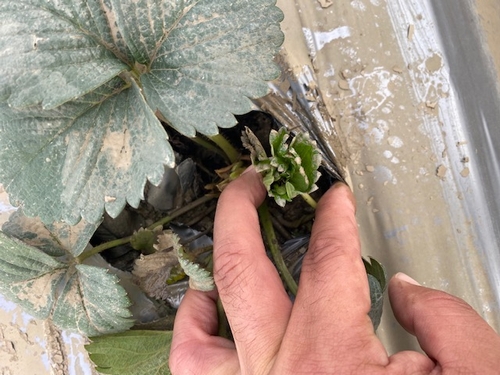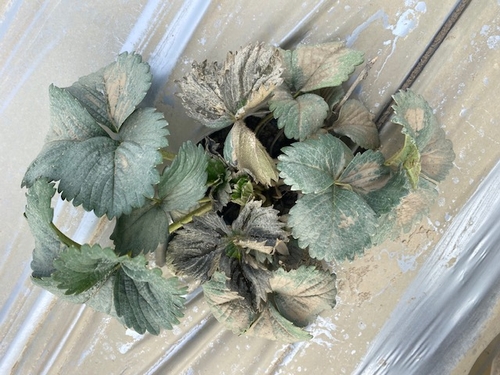Posts Tagged: flooding
Climate-Change Resources
University of California UC ANR Green Blog (Climate Change and Other Topics) https://ucanr.edu/blogs/Green/index.cfm?tagname=climate%20change (full index)
Examples:
- Save Trees First: Tips to Keep Them Alive Under Drought https://ucanr.edu/b/~CdD
- Landscaping with Fire Exposure in Mind: https://ucanr.edu/b/~G4D
- Cities in California Inland Areas Must Make Street Tree Changes to adapt to Future Climate https://ucanr.edu/b/~oF7
Drought, Climate Change and California Water Management Ted Grantham, UC Cooperative Extension specialist (23 minutes) https://youtu.be/dlimj75Wn9Q
Climate Variability and Change: Trends and Impacts on CA Agriculture Tapan Pathak, UC Cooperative Extension specialist (24 minutes) https://youtu.be/bIHI0yqqQJc
California Institute for Water Resources (links to blogs, talks, podcasts, water experts, etc.) https://ciwr.ucanr.edu/California_Drought_Expertise/
UC ANR Wildfire Resources (publications, videos, etc.) https://ucanr.edu/News/For_the_media/Press_kits/Wildfire/ (main website)
-UC ANR Fire Resources and Information https://ucanr.edu/sites/fire/ (main website)
-Preparing Home Landscaping https://ucanr.edu/sites/fire/Prepare/Landscaping/
UC ANR Free Publications https://anrcatalog.ucanr.edu/ (main website)
- Benefits of Plants to Humans and Urban Ecosystems: https://anrcatalog.ucanr.edu/pdf/8726.pdf
-Keeping Plants Alive Under Drought and Water Restrictions (English version) https://anrcatalog.ucanr.edu/pdf/8553.pdf
(Spanish version) https://anrcatalog.ucanr.edu/pdf/8628.pdf
- Use of Graywater in Urban Landscapes https://anrcatalog.ucanr.edu/pdf/8536.pdf
- Sustainable Landscaping in California https://anrcatalog.ucanr.edu/pdf/8504.pdf
Other (Non-UC) Climate Change Resources
Urban Forests and Climate Change. Urban forests play an important role in climate change mitigation and adaptation. Active stewardship of a community's forestry assets can strengthen local resilience to climate change while creating more sustainable and desirable places to live. https://www.fs.usda.gov/ccrc/topics/urban-forests
Examining the Viability of Planting Trees to Mitigate Climate Change (plausible at the forest level) https://climate.nasa.gov/news/2927/examining-the-viability-of-planting-trees-to-help-mitigate-climate-change/
Reports and other information resources coordinated under the auspices of the United Nations and produced through the collaboration of thousands of international scientists to provide a clear and up to date view of the current state of scientific knowledge relevant to climate change. United Nations Climate Action
Scientific reports, programs, action movements and events related to climate change. National Center for Atmospheric Research (National Science Foundation)
Find useful reports, program information and other documents resulting from federally funded research and development into the behavior of the atmosphere and related physical, biological and social systems. Search and find climate data from prehistory through to an hour ago in the world's largest climate data archive. (Formerly the "Climatic Data Center") National Centers for Environmental Information (NOAA)
Think tank providing information, analysis, policy and solution development for addressing climate change and energy issues (formerly known as the: "Pew Center on Global Climate Change"). Center for Climate & Energy Solutions (C2ES)
Mapping Resilience: A Blueprint for Thriving in the Face of Climate Disaster. The Climate Adaptation Knowledge Exchange (CAKE) was launched in July 2010 and is managed by EcoAdapt, a non-profit with a singular mission: to create a robust future in the face of climate change by bringing together diverse players to reshape planning and management in response to rapid climate change. https://www.cakex.org/documents/mapping-resilience-blueprint-thriving-face-climate-disaster
Cal-Adapt provides a way to explore peer-reviewed data that portrays how climate change might affect California at the state and local level. We make this data available through downloads, visualizations, and the Cal-Adapt API for your research, outreach, and adaptation planning needs. Cal-Adapt is a collaboration between state agency funding programs, university and private sector researchers https://cal-adapt.org/
Find reports, maps, data and other resources produced through a confederation of the research arms of 13 Federal departments and agencies that carry out research and develop and maintain capabilities that support the Nation's response to global change. Global Change (U.S. Global Change Research Program)
The Pacific Institute is a global water think tank that combines science-based thought leadership with active outreach to influence local, national, and international efforts to develop sustainable water policies. https://pacinst.org/our-approach/
Making equity real in climate adaptation and community resilience policies and programs: a guidebook. https://greenlining.org/publications/2019/making-equity-real-in-climate-adaption-and-community-resilience-policies-and-programs-a-guidebook/
Quarterly CA Climate Updates and CA Drought Monitor Maps (updated each Thursday) https://www.drought.gov/documents/quarterly-climate-impacts-and-outlook-western-region-june-2022
Rx for Flooded Strawberries
The recent flooding on the Central Coast has really put a lot of local strawberry growers in a bad position. Some fields have been underwater several days to a week or more, which has deprived plants of oxygen and sunlight needed for respiration and growth. As these plants try to recover, they will likely be severely set back for several weeks. Other fields that were briefly flooded are silted over and have completely saturated soils.
Looking beyond our current conditions of just too much water, we need think about what the plan of action is going to be going forward into the spring. Since in many areas strawberry plants have been set back because they were in saturated, anaerobic soil, growers will need to turn their attention to jump starting growth in their fields once the ground dries out, and becomes aerobic again.
It will be important at this time to think about nutrition. It's a fair bet that even fields that received pre-plant fertilizer lost a significant amount of nitrogen from the soil during the flooding and unprecedented rains during the last few months. We could be wrong about this, so the first thing growers and farm managers should do once they are back out in the fields is take a soil sample and check the mineral N levels, especially the concentration of nitrate, which is the form of nitrogen that strawberry readily take up. Nitrate-N will also mineralize from the soil organic matter and any organic amendments that were previously incorporated in the soil as the soil becomes oxygenated again. Soil samples should be collected from 8 to 12 locations in the field from the 0 to 12-inch depth in or near the plant row and composited together. A subsample of the composited soil should be analyzed for mineral forms of nitrogen (nitrate and ammonium). We recommend using the soil nitrate quick test to assess the soil nitrate status of your fields in a timely manner. Please refer to this previous article on the how to accurately measure soil nitrate using the quick test. If you intend to send the soil to a laboratory that can quickly analyze the soil, we suggest shipping the soil sample with blue ice so that it stays cold to prevent mineralization of N in transit. The laboratory should analyze the sample for both ammonium and nitrate, the two mineral forms of nitrogen that are in the soil.
If the soil nitrate values are below 10 ppm nitrate-N then the plants will likely benefit from an addition of N fertilizer. Fertilizers containing nitrate forms of N such as CAN-17, UAN32, or ammonium nitrate would be good to add so that the strawberry plants can immediately take up nitrogen, which should help jump start growth. The urea and ammonium contained in fertilizer will also mineralize to nitrate, but due to the recent anaerobic conditions and cold soil temperatures, this process may be slower than normal.
Since this might be the first time that you've run your irrigation system in a while, it'll be good to check before fertigating to ensure that everything is in good order. Check for broken connections between drip lines and the submains (layflat, oval hose). Check that valves and pipes are still connected and unbroken and that the pump is functioning well. These will be all good items to check before putting this system to work after such a long hiatus.

Photo showing green leaflets starting to push post flood. Photo courtesy Carlos Torres.

Strawberry covered with silt post flood. This plant will survive, albeit delayed. Photo courtesy Carlos Torres.
Safety - Winter weather advisory
Dear Colleagues,
Through Wednesday, California is expecting rounds of heavy rain, mountain snow, high winds, with potential for flooding, downed trees/debris and power outages. Please stay safe.
If you live near a river, levee or area prone to flooding, gather your essentials so you'll be ready to evacuate at a moment's notice. You'll have some peace of mind if you have gathered items in advance to be away from your home if evacuation orders are given by authorities. Also, prepare for power outages by having electronic devices charged, vehicles fueled, and the ability to prepare food and stay warm.
This is a good time to review your procedures for preparedness, such as the ability to stay informed and to be able to communicate. See Safety Note #203 for winter storm preparedness tips.
Click here to view the Cal-OES weather threat briefing.
A Safety Note series in the category of “Disaster/Emergency Information” is available at https://safety.ucanr.edu/Safety_Notes/- recommended are notes #166-169, #189 and #203.
For current weather alert information, Cal/OSHA recommends the NOAA Weather Alerts page at http://alerts.weather.gov/cap/ca.php?x=1.
David Alamillo
Environmental Health & Safety Specialist
Drought focus of Water Resources IMPACT magazine special issue
UC ANR experts address emotional toll of drought
Preparing the American West for prolonged drought is the focus of a double issue of Water Resources IMPACT magazine. The California Water Commission staff are guest editors for this special open-access edition of the magazine, which is published by the American Water Resources Association.
Faith Kearns, academic coordinator of University of California Agriculture and Natural Resources' California Institute for Water Resources, is among the authors delving into how drought impacts people and the environment and how we can better prepare for the inevitable.
The first issue, published on Feb. 14, focuses on water scarcity issues confronting California and the ways these issues affect different sectors.
In “Trauma, Care, and Solidarity: Addressing the Emotional Toll of Chronic Drought,” Kearns highlights the effects of drought on mental health. She points to the spike in suicide hotline calls when wells ran dry in Southeast Asian communities in California's Central Valley.
By listening to Southeast Asian farmers, Ruth Dahlquist-Willard and Michael Yang of UC Cooperative Extension were able to “lighten the load” for them by providing pragmatic support, Kearns writes.
“The scale of some of these highly emotional issues – drought, wildfires, climate change – can make them seem incredibly difficult, if not impossible, to deal with,” Kearns said. “At the same time, they are affecting everyone living in the western U.S. on a daily basis. I wanted to highlight and provide models based on work that people – whether they are researchers, clinical psychologists, or Cooperative Extension advisors – are doing right now to ease the way.”
The authors who contributed to the double issue are a diverse array of Tribal experts, academics, nongovernmental organization thought-leaders, water managers and water policy influencers, each of whom brings their own perspective on the topic of drought. Their expertise and perspectives in climate science, water policy and water management will help inform drought-related decision-making and support policies that better prepare the state to thrive during periods of prolonged water scarcity.
In addition to Kearns, the first issue includes articles contributed by:
- Samantha Stevenson, University of California, Santa Barbara
- Jay Lund, University of California, Davis
- Ron Goode, North Fork Mono Tribe
- Andy Fecko, Placer County Water Agency
- Jeff Mount, Public Policy Institute of California, and Ted Grantham, University of California, Berkeley/UC Cooperative Extension
- Nat Seavy and Karyn Stockdale, National Audubon Society
- Kjia Rivers, Community Water Center
- Cannon Michael, Bowles Farming
- Michelle Reimers, Turlock Irrigation District
The January/February edition of Water Resources IMPACT magazine can be accessed, free of charge, on the American Water Resources Association website at https://www.awra.org under “Publications.”
The second issue, to be published in March, will focus on drought response, considering the options for adaptation. This two-part series complements the Commission's work on strategies to protect communities and fish and wildlife in the event of a long-term drought.
Information and resources for assessing food safety risk after flooding events
Erin Dicaprio, Associate Professor of Cooperative Extension, Department of Food Science and Technology, University of California Davis has summarized information and resources for assessing crop food safety after a flooding event. There are links to the Leafy Green Marketing Agreement Flood fact sheet and also a presentation made by Trevor Suslow, emeritus UC Cooperative Extension Specialist. Please follow the link below.



